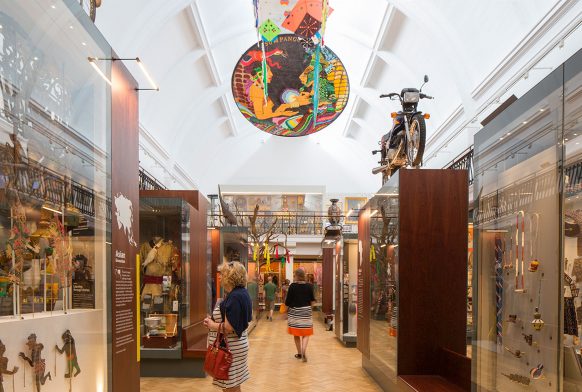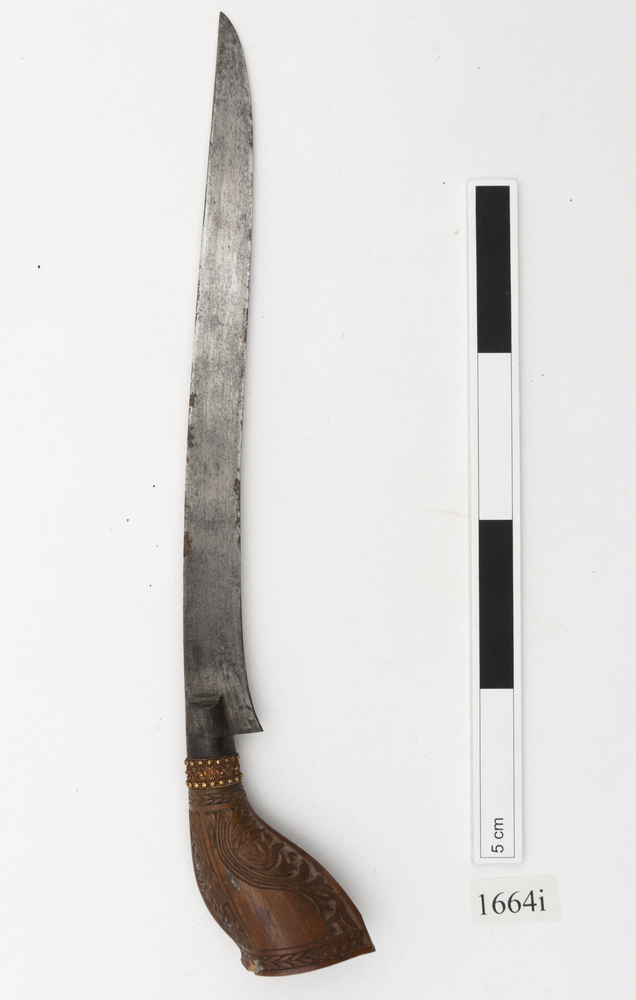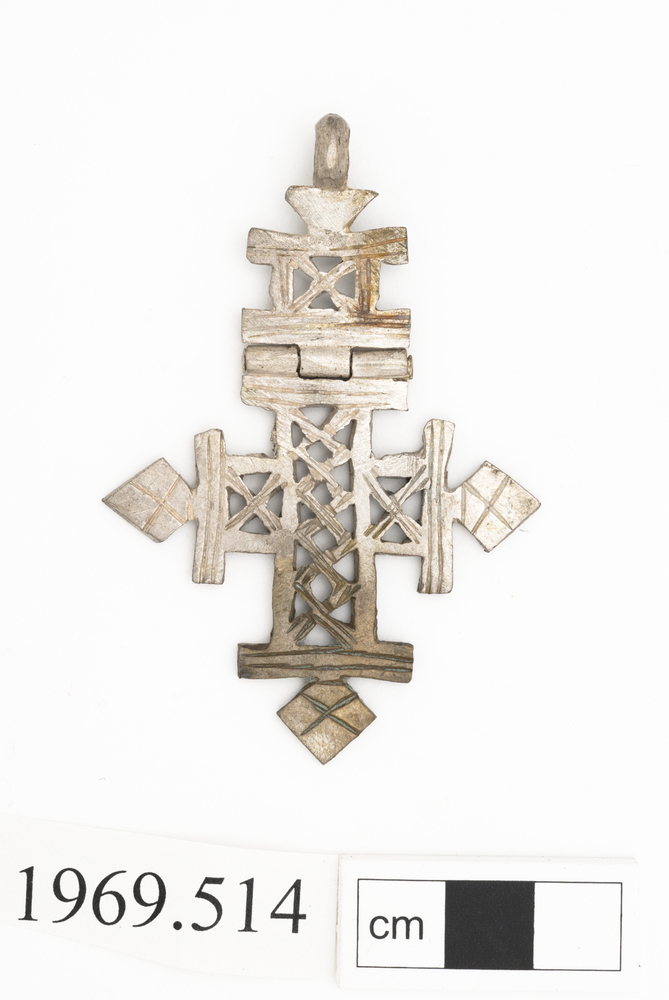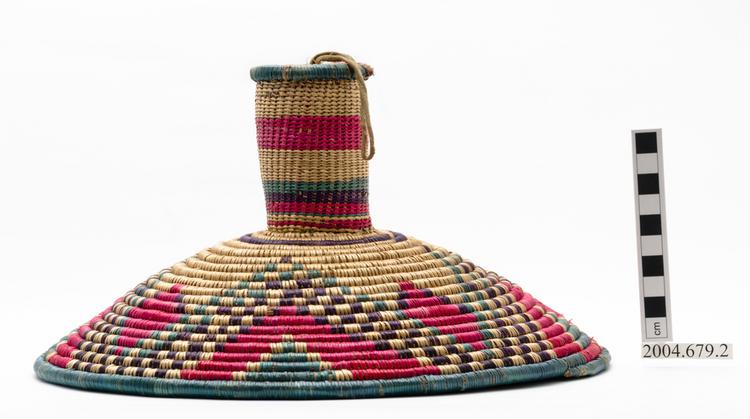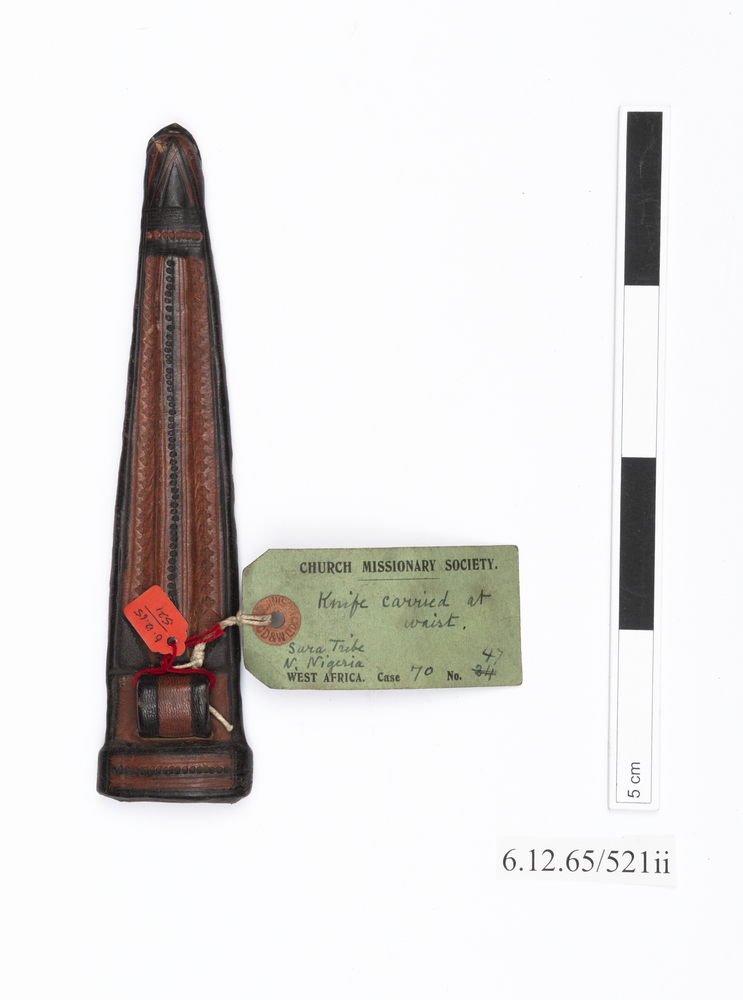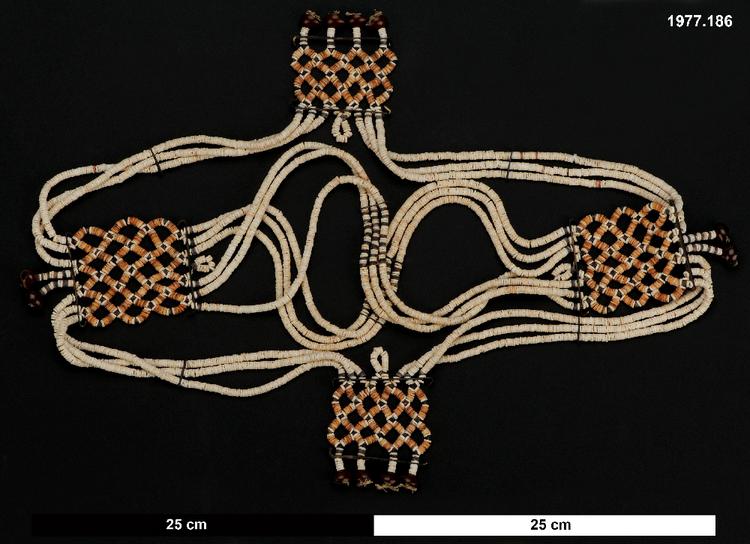
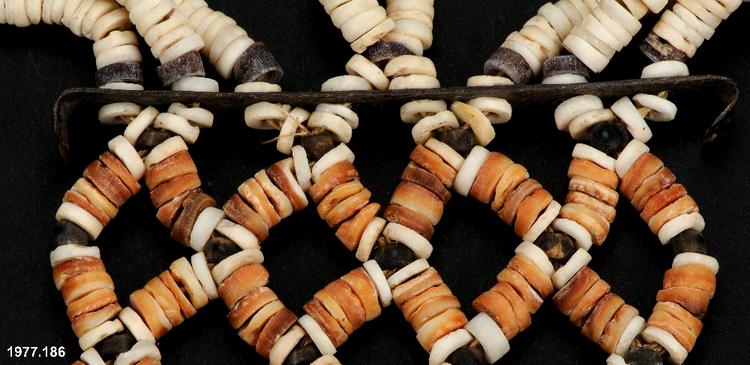
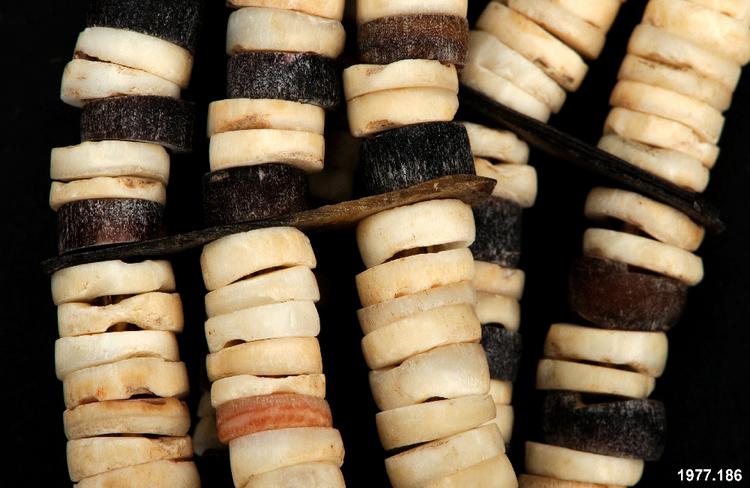
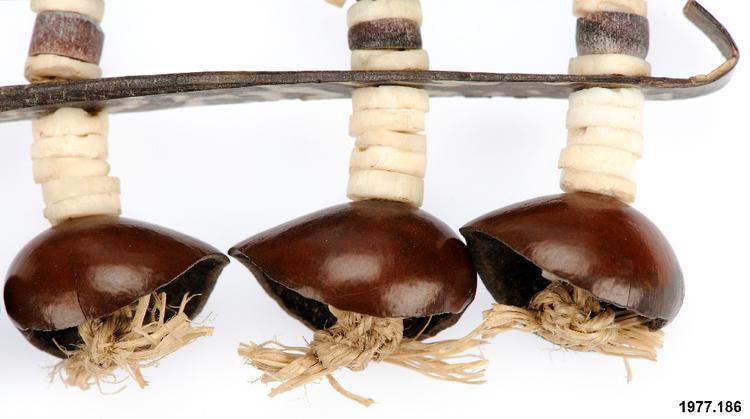
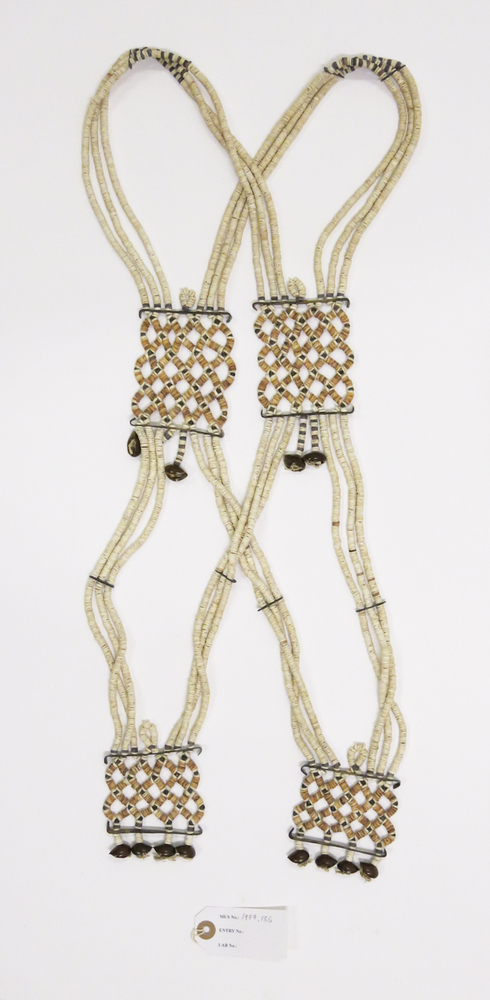
Bridal belt made up of spiny rock oyster, cockle and black oyster shell beads, threaded together with seeds.
Bride’s Shell Currency Shawl, Saku-Saku, Talakali village, Langalanga Lagoon, Malaita, Solomon Islands, Central Melanesia Although shell disk currency was formerly in use on most of the Solomon Islands, by the time this piece was manufactured in the mid-1970s, it was only on Malaita that new pieces were still being made. Thankfully, the recent revival of traditional crafts in the Solomon Islands has given the shell disk-cutters of Langalanga Lagoon a new source of paper money through the purchases of art exporters and tourist visitors. Normally, shell disks of mixed colours are strung on cords roughly 1.8 m long as a more-or-less standard unit of currency, which go by the name of tafuliae. The red shell disks (romu) are the most valuable throughout the Solomons, and are cut, drilled and ground from the shell of the Red-Lipped Spiny Rock Oyster (Spondylus ducalis). The lower-denomination white disks (galia) are cut from a local cockle shell, and the black disks (kurila) are cut from the Black-Lipped Pearlshell (pinctada margaritifera). Such strings continue to be preferred over paper money for exchanges and gifts of a traditional or customary nature: the paying of formal compensation for wrongs done, the purchase of particularly fine pigs, and the paying of a bride’s dowry. For this latter purpose, the particularly beautiful saku-saku was required. Part currency item, part elaborate piece of jewellery, this net of shell disk strings was worn by the bride over her shoulders and down to her hips during her marriage. Shell, vegetable fibre, nuts, turtleshell. Mid-1970s. Purchased at Talakali by Mrs Anna Craven in 1977 for the Horniman Museum.



